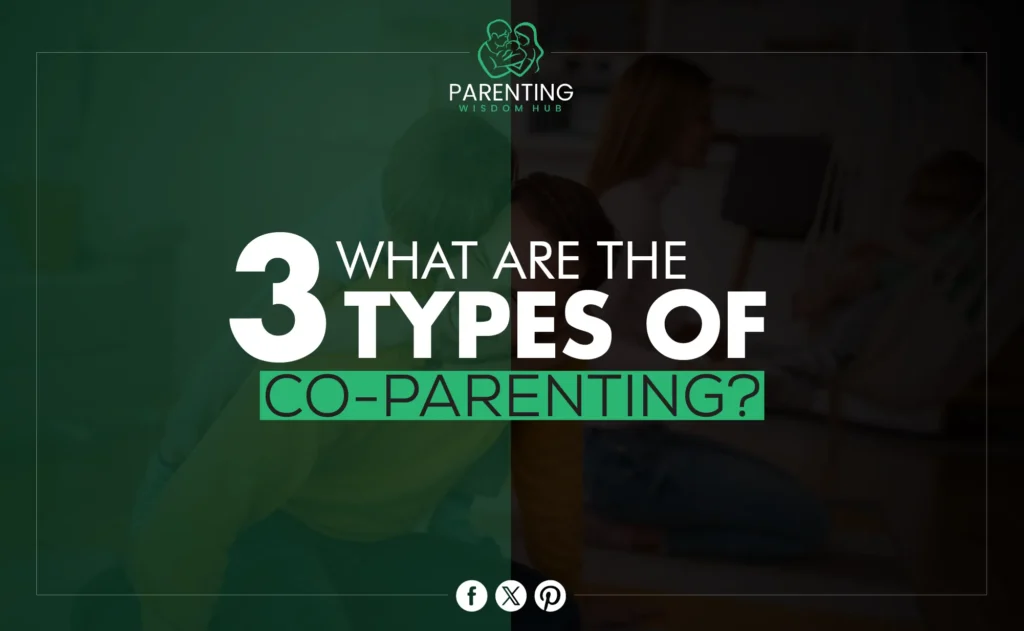The 3 Types of Co-Parenting Every Parent Should Know
Modern families rely on co-parenting, the shared task of raising children after divorce. It requires both parents’ cooperation, communication, and consistency to prioritize children’s well-being despite family structure changes. Knowing What are the 3 Types of Co-Parenting? is essential since each style affects children’s emotional and psychological development.
We are already covered the various type of queries like:
Can You Lose Custody for Not Co-Parenting?
What is Considered Harassment By a Co-Parent?
This blog will discuss the three primary styles of co-parenting, which are tailored to different interpersonal dynamics and individual needs and provide a framework for effective parenting partnerships.
Cooperative Co-Parenting
Both parents work together to raise their children in cooperative co-parenting, even though they are no longer dating. This co-parenting paradigm emphasizes the following: What are the 3 Types of Co-Parenting? with solid communication, adaptability, and mutual respect.
Key Characteristics
Open communication is standard in cooperative co-parenting. Parents discuss their children’s needs, schedules, and life events to promote equal decision-making. Parents may need to switch days or schedules without conflict, so flexibility is critical. Respect for their positions in their children’s lives affects their connection.
Benefits for Children and Parents
Seeing their parents work together harmoniously gives youngsters a sense of security and stability. It promotes emotional well-being and lowers parental conflict stress in children. Positive relationships help parents manage separation logistics and reduce emotional stress.
Challenges and Overcoming Them
Although beneficial, cooperative co-parenting has drawbacks. Conflicts might still emerge if one parent feels the other isn’t following the agreement. To address these issues, many co-parents write down their roles and boundaries. Open communication and problem-solving can be achieved through regular meetings or counseling.
Real-Life Examples or Case Studies
Sarah and Tom agreed to co-parent after their divorce. They discuss their two kids’ school progress and upcoming events weekly. After Tom moved for work, they used video calls for meetings. They adjusted the custody plan to longer but fewer visits. Despite the distance, their adaptability and communication have helped their children thrive.
This study answers the question, What are the 3 Types of Co-Parenting? Practically and powerfully by showing how good collaboration can help children thrive after divorce.
Parallel Co-Parenting
Parallel Co-parenting is when both parents handle their parenting duties without much interaction. This paradigm appears in What are the 3 Types of Co-Parenting? as it offers an alternative for parents who struggle to cooperate without confrontation.
Key Characteristics
Parallel co-parenting involves little direct communication between parents, who use written communications or third-party apps to share child information. Formal interactions with clear limits reduce disagreements and misunderstandings. When caring for children, each parent makes daily decisions autonomously.
Benefits for Children and Scenarios Where This Might Be the Best Approach
Children benefit most from parallel co-parenting since it reduces parental conflict. This concept is helpful in high-conflict circumstances when parent-child interactions can cause stress and anxiety. It lets parents have secure, caring relationships with their kids without conflict.
Challenges and Strategies for Maintaining Stability
Parallel co-parenting can cause household irregularity, which can confuse and unnerve children. Families should agree on education, health, and conduct to maintain stability. A co-parenting app can assist in creating a constant and stable environment for children by tracking schedules, events, and medical information.
Tips for Setting Boundaries and Communication Guidelines
Parallel co-parenting requires clear limits and communication. Parents should agree on what to share, how to communicate, and reaction timeframes.
They may contact you only via email or a co-parenting app and need 24-hour responses. Clear standards minimize miscommunication and keep parents informed about their children without conflict.
What are the 3 Types of Co-Parenting? Parallel co-parenting is a good alternative for people who want to reduce direct interaction while still being parents. This method lets kids benefit from both parents’ scheduled and conflict-free interaction.
Conflicted Co-Parenting
In conflicted co-parenting, parents’ continual conflicts and high conflict levels dominate their relationship. This form is crucial when discussing the 3 Types of Co-Parenting because it shows how family issues may affect everyone.
Key Characteristics
High conflict, poor communication, and frequent disagreements characterize conflicted co-parenting. It can create a hostile environment for all parental interactions. Parties rarely compromise during defensive or confrontational discussions.
Impact on Children and Strategies to Mitigate Negative Effects
Constant conflict and tension can cause anxiety, behavioral difficulties, and emotional suffering in children. Parents must protect their children from arguments and avoid criticizing each other in front of them to reduce these impacts. Structured communication and essential touch can limit children’s exposure to conflict.
Advice for Seeking Professional Help (Mediation, Counseling)
Professional support is often needed for conflicted co-parents. Family mediators, therapists, and co-parenting counselors can help families discuss concerns and improve communication. These professionals can also teach parents how to communicate and resolve problems without harming their children.
Steps to Move Towards a More Constructive Co-Parenting Arrangement
Moving toward a more constructive co-parenting arrangement involves several key steps:
- Formalizing Agreements: Legally binding parenting, financial, and decision-making agreements can lessen conflict.
- Improving Communication: Communication skills training for high-conflict parents may help. Clear, succinct, and non-confrontational communication improves interactions.
- Setting Boundaries: Setting clear boundaries for behavior in each other’s presence and during child-related conversations can avert conflict.
- Regular Reviews: Reassessing and adjusting the co-parenting agreement can ensure it serves the children’s best interests.
When discussing the 3 Types of Co-Parenting? Contentious co-parenting shows how deeply parental disagreements may affect children and emphasizes the need for more peaceful and constructive relationships.
Comparison of the Three Types of Co-Parenting
Do you understand the 3 Co-Parenting Types? Focuses on communication, adaptability, and parental engagement. Below is a bullet-point comparison of these critical aspects across the three types:
Cooperative Co-Parenting
- The communication level is high; there are open and regular conversations and purposeful information sharing.
- High level of flexibility; changes and accommodations are often made to meet children’s and each other’s needs.
- Equal and cooperative parental involvement means both parents are involved in raising a child.
Parallel Co-Parenting
- Communication is limited and primarily organized and formal. Technology or third-party tools are often used to help.
- Flexibility: Moderate; adjustments and changes happen less often and need more formal deals.
- Regarding parental involvement, each parent makes daily choices on their own while the kids are with them.
Conflicted Co-Parenting
- Communication is terrible; disagreements are usually defensive or hostile, and there needs to be more productive dialogue.
- Low flexibility means that people strictly follow rules or deals and don’t make changes on the spot.
- Different parents may be involved; sometimes, one parent takes on more duty because the other parents can’t work together.
Choosing the Best Co-Parenting Style Based on Personal Situations
The best way for each family to co-parent depends on several things that are unique to that family. Here are some things parents should think about:
- Level of Conflict: Cooperative co-parenting, with open communication and flexibility, may benefit low-conflict families. However, high-conflict couples may benefit from parallel co-parenting to reduce child stress.
- Communication Skills: Good communicators and respectful parents may choose cooperative co-parenting. Structured parallel co-parenting may help communication-challenged parents.
- Children’s Needs: Consider children’s emotional and psychological requirements. A secure, conflict-free atmosphere is essential, so choose a style that reduces parental conflict.
- Personal Growth and Professional Guidance: The ability to adjust to changes in co-parenting approaches. If their co-parenting strategy isn’t working, parents should consider professional aid.
What are the 3 Types of Co-Parenting? Parents can make informed decisions that benefit their children by understanding the characteristics of each style and providing a loving environment after divorce.
Conclusion:
Are we exploring the 3 Co-Parenting Types? Our research has revealed the differences between cooperative, parallel, and conflicted co-parenting. Communication, flexibility, and parental participation vary by style, affecting children’s emotional and developmental well-being.
Co-parenting styles should change with circumstances and children’s needs. Parents should be flexible in changing their co-parenting style as their children grow and their relationships change. Mediation and counseling can also help switch approaches or improve the present strategy.
Any co-parenting agreement should prioritize children’s well-being and needs. Parents may ensure their children thrive in a supportive, secure, and loving environment regardless of problems by choosing the best co-parenting approach and being flexible. This method addresses what are the 3 Types of Co-Parenting? and helps families cope with separation healthily.


